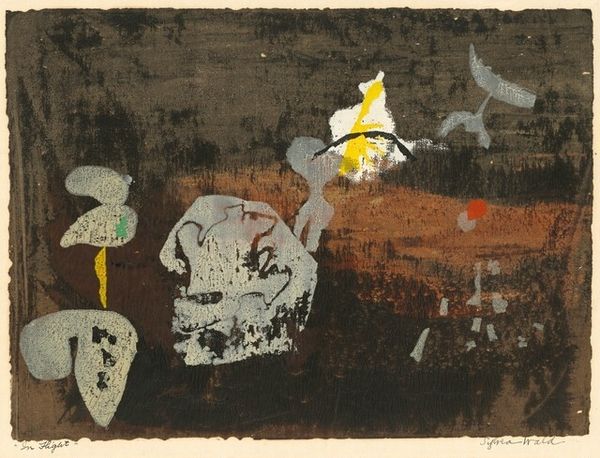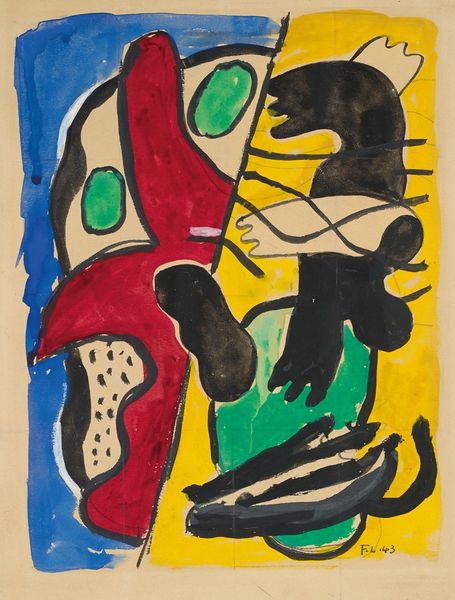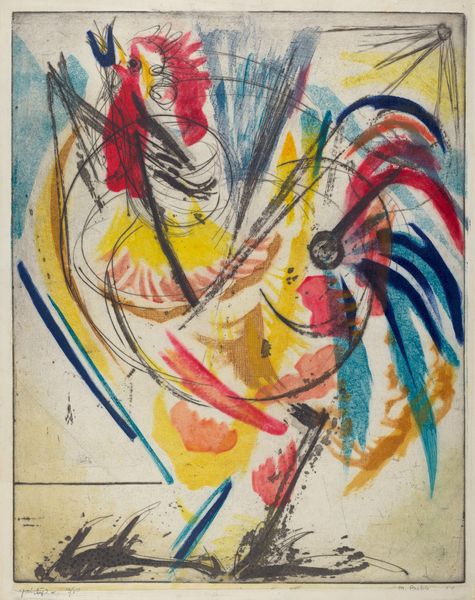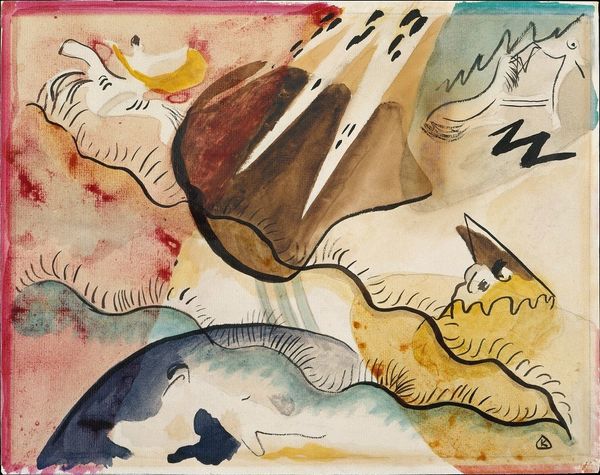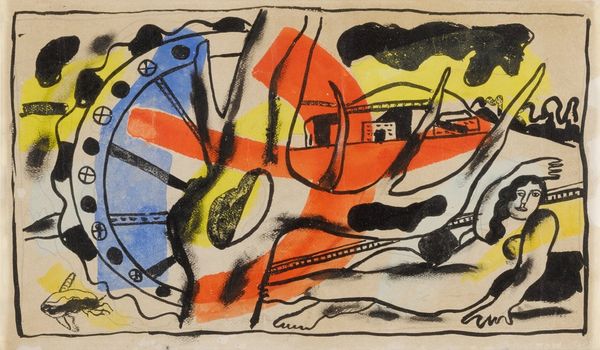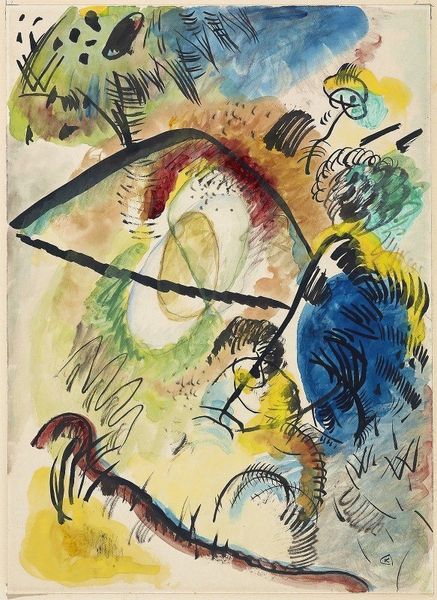
Copyright: Modern Artists: Artvee
Editor: So, this is Picasso’s *Femme endormie*, or Sleeping Woman, from 1933. It's an oil painting, and I’m struck by the bold lines and colors. There’s something almost confrontational about the figure even though she's supposed to be asleep. What's your take? Curator: The confrontation you perceive, I think, comes from the intentional disruption of perspective typical of Picasso, challenging traditional representation. More broadly, Expressionism allowed artists to portray subjective emotions and perspectives rather than objective reality. In light of his personal life, we can view his portraits of women like a record of his changing relationships, reflecting societal power dynamics. Do you see how her form is broken down and reassembled? What does this tell us about the male gaze during the interwar period? Editor: I see the disjointed forms now, like the artist is breaking down her body. It definitely makes me think about how women were viewed at the time, maybe objectified or scrutinized. But why the emphasis on sleep? Curator: Sleep is complex—a state of vulnerability, escape, and perhaps even resistance. How might the woman’s slumber signify a retreat from the very male gaze we are discussing? Note also the painted words, almost graffiti-like, reminding us this is a captured moment and a posed portrait, however deconstructed. Editor: So it’s like she is both a subject and an object, resisting even in sleep. I didn't catch the graffiti element before! I initially just saw this painting as another portrait, but now I see the deeper social commentary. Curator: Exactly! By disrupting conventional portrayals, Picasso encourages a more critical viewing that speaks to issues of identity, power, and representation. And, like any art, meaning is in the eye of the beholder. Editor: That makes the artwork way more meaningful and engaging than just the shapes on the canvas! Thank you.
Comments
No comments
Be the first to comment and join the conversation on the ultimate creative platform.

